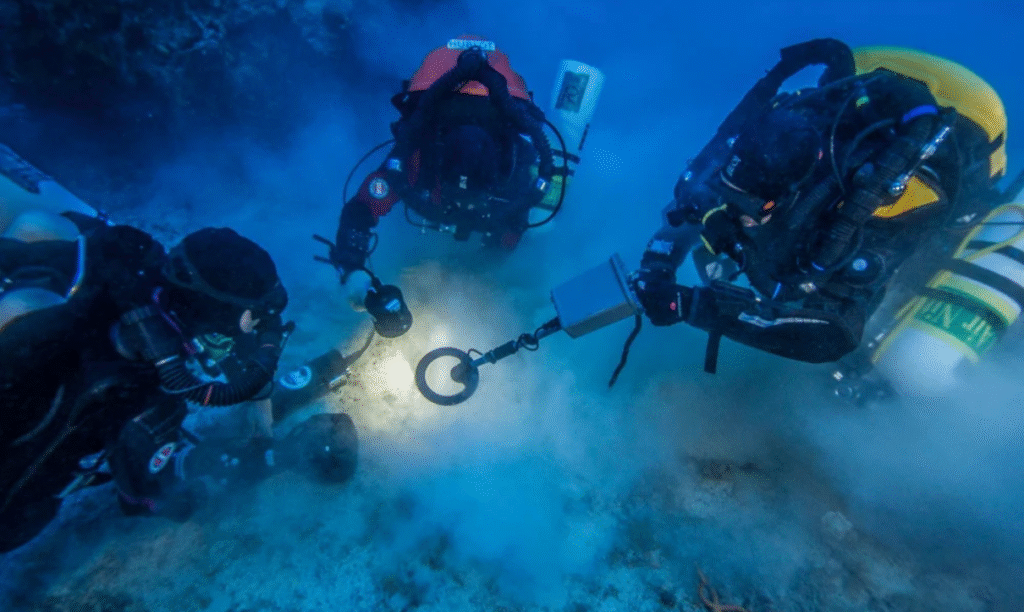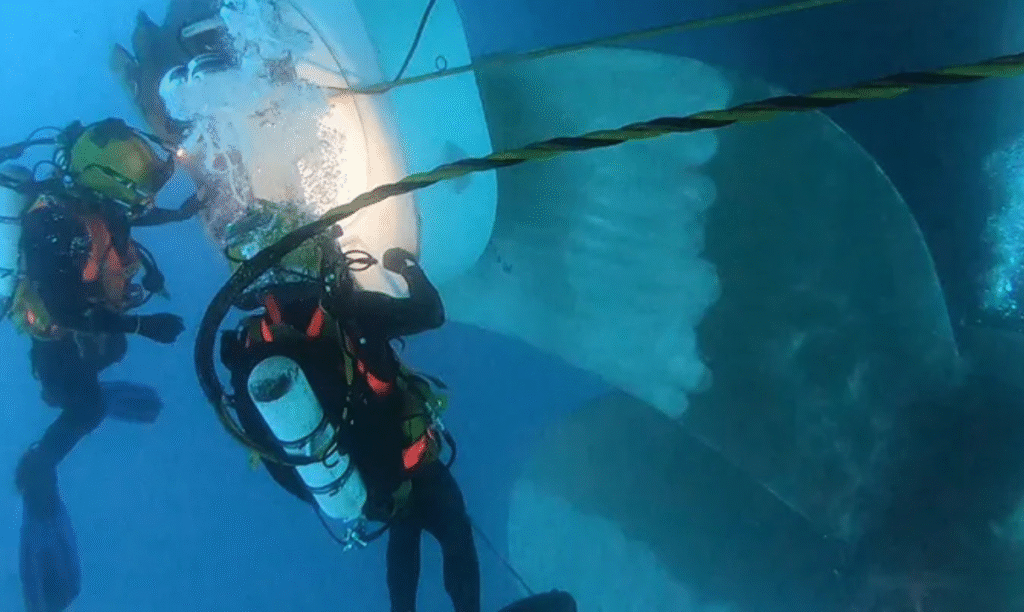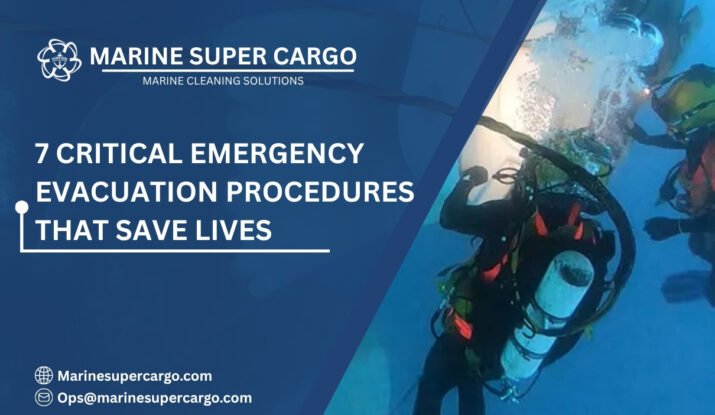Emergencies are the silent storms that no ship owner, manager, or operator wishes to face, yet the reality of maritime operations makes them unavoidable. Fires, collisions, flooding, hazardous leaks—these events can unfold within seconds, leaving crews with little time to think. That’s why emergency evacuation procedures are not just checklists tucked away in safety manuals; they are lifelines that bridge chaos and survival.
In this in-depth guide, we’ll walk together through the frameworks, best practices, regulatory requirements, and even some forward-looking trends that shape how emergency evacuation procedures are evolving today. By the end, you’ll not only understand how to strengthen your own shipboard emergency response but also why these procedures are vital for compliance, crew safety, and environmental stewardship.
Why Emergency Evacuation Procedures Matter
Imagine being at sea when thick smoke fills the engine room. The alarms blare, crew scramble, and in that moment, hesitation could be deadly. Well-documented and practiced emergency evacuation procedures ensure order replaces confusion. These procedures matter because:
- They save lives by guiding safe, rapid exits.
- They reduce panic through structured response protocols.
- They protect assets and minimize damage to the vessel.
- They ensure compliance with authorities like the International Maritime Organization (IMO).
- They reduce liability, regulatory penalties, and reputational harm.
Without clear emergency evacuation procedures, even the most experienced crew can be paralyzed by uncertainty. It’s like trying to fight a storm without a compass—you may survive, but at what cost?

Types of Maritime Emergencies Requiring Evacuation
Maritime emergencies are diverse and often unpredictable. Some scenarios demanding immediate evacuation include:
- Fires & explosions in the engine room or accommodation block.
- Flooding or grounding that compromises vessel stability.
- Collision or allision (impact with another vessel or fixed structure).
- Hazardous material release, such as toxic gases or oil spills.
- Piracy or security threats requiring rapid abandonment.
Each scenario has distinct risks, and tailored emergency evacuation procedures help ensure appropriate, coordinated responses.
Regulatory Frameworks Governing Emergency Evacuation Procedures
Safety at sea is never left to chance. International conventions set rigorous expectations:
- IMO SOLAS (Safety of Life at Sea Convention): Outlines mandatory emergency training and drills for crew, covering fire, abandon ship, and survival craft usage.
- MARPOL (Marine Pollution Convention): Requires safeguards in evacuations to prevent environmental harm during fuel, oil, or chemical releases.
- IMCA (International Marine Contractors Association): Offers best practice guidelines on safety management and emergency preparedness.
- IAPH (International Association of Ports and Harbors): Provides integrated port safety and evacuation frameworks during port emergencies.
These frameworks act like the structural beams of a ship’s hull—crucial supports that, if neglected, compromise resilience. Without alignment to these standards, fines, detentions, or even accidents could cripple your operations.
Core Elements of Effective Emergency Evacuation Procedures
Creating reliable emergency evacuation procedures starts with understanding the core building blocks. Let’s break them down:
- Risk Assessment
Identify potential hazards specific to your vessel’s trade, size, and operations. For example, chemical tankers face higher risks of toxic leaks, while bulk carriers encounter threats to their structural integrity. - Clear Chain of Command
Every second counts in an emergency. Defined command hierarchies prevent conflicting instructions. Typically, the Master issues the abandon-ship order, while safety officers handle muster drills. - Muster Stations & Escape Routes
The crew must know where to gather and how to reach the lifeboats quickly. Luminated escape signage, smoke-proof stairwells, and tested lifeboat lowering systems are essential. - Emergency Communication
From alarms to public address systems and VHF radios, redundant channels must be in place. Clear, predefined signals eliminate confusion. - Lifesaving Appliances
Lifeboats, liferafts, emergency beacons, survival suits, and firefighting gear are the tools of survival. Yet, without training, these tools risk remaining unused or misused. - Training & Drills
Weekly fire drills, monthly abandon-ship exercises, and surprise emergency simulations build crew resilience. Familiarity fosters calm, and calm saves lives.
✅ 4 Things to Check for Safety at Sea pic.twitter.com/dAxhJQ2i6U
— Marine Super Cargo (@Marinsupercargo) September 14, 2025
Step-by-Step: How an Evacuation Should Unfold
A well-structured evacuation procedure resembles a carefully choreographed dance—each step synchronized for minimal errors. Here’s how the sequence usually plays out:
- Alarm raised and emergency confirmed.
- Crew follows roles outlined in the muster list.
- Passengers or non-essential personnel are guided to muster stations.
- Emergency signals are broadcast repeatedly.
- Lifejackets and protective gear are donned.
- Evacuation order issued by the Master.
- Lifeboats or rafts are deployed in an orderly manner.
- Roll call completed to ensure no one is left behind.
- Use of distress signals (EPIRBs, SARTs, flares) for rescue operations.
Skipping or mismanaging even one of these steps can escalate a contained emergency into a full-blown catastrophe.
Common Evacuation Mistakes and How to Avoid Them
Despite training, every year, investigations by IMO and Marine Insight reveal repeated missteps:
- Poorly marked escape routes lead to panic.
- Insufficient drills cause hesitation during real emergencies.
- Outdated emergency manuals do not reflect current crew structures.
- Neglected equipment maintenance (lifeboats failing during lowering).
- Language barriers on multinational crews are creating communication breakdowns.
The antidote is proactive auditing, frequent training refreshers, and robust translation protocols onboard.
Technology and Innovation in Evacuation Procedures
Modern evacuation planning is embracing digital tools:
- Virtual reality training simulators enabling realistic muster drills.
- AI-enabled monitoring systems predict fire spread or flooding patterns.
- Smart wearables transmitting crew location for search and rescue.
- Automated lifeboat launching minimizes manual handling risks.
These tools are no longer futuristic luxuries—they’re rapidly becoming industry standards. As ship operators, investing in them signals not only compliance but also genuine care for crews.
Environmental Considerations in Evacuations
An overlooked yet critical aspect: evacuations can risk spills, fuel releases, or fires that devastate marine ecosystems. MARPOL mandates explicit measures:
- Spill containment drills.
- Eco-conscious design of lifeboats and firefighting foams.
- Regular testing of oil-water separators and spill response gear.
In short, protecting the crew and environment go hand-in-hand. A vessel that ignores one endangers the other.

Future of Emergency Evacuation Procedures
Looking ahead, we can expect tighter integration between emergency evacuation procedures and:
- Predictive risk modeling using big data.
- Increased IMO emphasis on climate-driven hazards (storms, floods).
- More advanced sustainability-linked safety gear.
- Broader crew training through global collaboration networks (like IMCA and IAPH).
The horizon promises smarter, faster, and greener safety systems.
Conclusion
Emergency evacuation procedures are far more than regulatory box-checks; they are survival roadmaps. To recap:
- They save lives and prevent chaos through structured steps.
- They safeguard compliance while minimizing financial and legal risks.
- They embrace new technologies and environmental safeguards critical for the future.
For ship operators, managers, and owners, investing time and resources into rock-solid evacuation planning is not optional—it’s essential. To strengthen your shipboard safety systems today and ensure compliance tomorrow, explore trusted maritime solutions at CleanShip.co.
FAQs:
Q1. What are emergency evacuation procedures on ships?
They are structured steps and drills designed to safely guide crew and passengers off the vessel during crises like fire, flooding, or collisions.
Q2. How often should evacuation drills be carried out?
Regulations require monthly abandon-ship drills and weekly fire drills. Consistency builds confidence and reduces hesitation during real events.
Q3. What is the role of muster stations in evacuation?
Muster stations are designated gathering points where the crew assemble before boarding lifeboats. They ensure order and a complete roll call.
Q4. Why is communication vital during evacuation?
Clear communication prevents panic, conveys instructions, and allows coordination. Multichannel systems like alarms, radios, and PAs are essential.
Q5. How do modern technologies improve evacuation procedures?
From wearable trackers to automated lifeboats, innovations help streamline evacuations, reduce errors, and increase crew survival rates.


